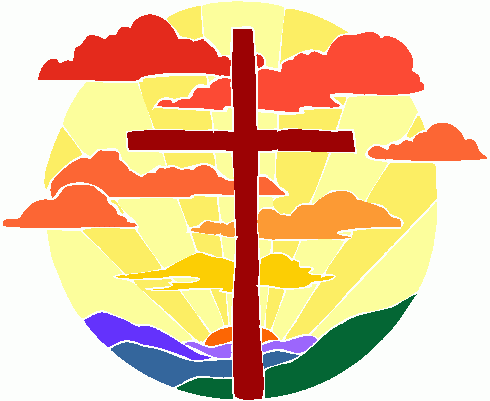The phrase “Lamb of God” was first used by John the Baptist as he pointed out Jesus to his listeners: “Look, the Lamb of God, who takes away the sin of the world!” (John 1:29, 40-41). They would have immediately grasped at least three important connotations: Passover, the daily temple sacrifices, and the story of Abraham and Isaac.
In the past, looking forward…
First, the Passover celebration each year commemorated deliverance from slavery in Egypt, that came by way of the sacrifice of a lamb. That lamb’s blood on the doorposts of the house caused the plague of death to “pass over” that household, while striking all households that did not have that identifying blood (Exodus 12:21-27).
Second, lambs were the animals sacrificed twice each day at the temple in Jerusalem (Numbers 28:3-4). They, along with other animals such as bulls and goats, were used as a “burnt offering” (completely consumed by the fire as a picture of complete dedication to God). They were also used as a “sin offering”, with the person’s sin symbolically transferred to the animal so that its death was paying the price for their sin. These animals had to be completely perfect, with no defects or blemishes.
The third connotation would have been the dramatic story of Abraham’s willingness to sacrifice his son Isaac at God’s command. Isaac was spared when God provided a ram instead, and the day was remembered for the sentence “God will provide for Himself a lamb for the burnt offering” (Genesis 22:7-8). (A friend has pointed out that on that specific day, the animal provided was a ram; the Lamb would be provided later!)
In the present, looking back…
Jesus is the fulfillment and expansion of these points. The Son of God became a human being 1 in order to be God’s provided Lamb. He was completely perfect, totally dedicated to His Father. His blood allows for deliverance from eternal death separated from God. We affirm this in our two most important Christian celebrations of the year, Christmas and Easter.
At Christmas, we celebrate Jesus’ birth in Bethlehem, where flocks were maintained to provide animals for the temple sacrifices. His parents were poor strangers to an overcrowded town and had no good place for Him to be born, so He was laid in an animal feeding trough. It is very possible that the shepherds who were His first visitors had been watching over the temple-bound flocks when the angels appeared to them (Luke 2:1-20). (Singer Steve Amerson has a song “Where Else Would a Lamb Be Born?” that tells this story beautifully.)
Notice where and when Jesus was born: In Bethlehem as foretold by the prophet Micah 700 years earlier (Micah 5:2, Matthew 2:1-6), and within 483 years after the return from Babylonian exile as foretold by Daniel almost 550 years earlier (Daniel 9:24-27 2).
At Easter, we commemorate Jesus’ death in Jerusalem. Even though He was innocent, he was crucified after losing so much blood from being beaten and whipped that He was already showing signs of hypovolemia 3 4. His last words from the cross, “It is finished“, were also used at that time to mean the equivalent of “Paid in full” on legal documents 5. The Apostle Paul described this as “He [God] made Him who knew no sin to be sin on our behalf, so that we might become the righteousness of God in Him” (2 Corinthian 5:21). God followed through on the sacrifice that He had spared Abraham and Isaac. 6
Notice where and when Jesus was killed: In Jerusalem, the same geographical location as Mt. Moriah 7 where 1850 years earlier 8 Abraham and Isaac were preparing the sacrifice, at the time of Passover (Luke 22:7, 14-16) that had been celebrated annually for over 1400 years. 9 This article traces the prophecy mentioned above from Daniel 9 exactly to the dates of Jesus’ time on earth.
Easter ultimately celebrates the sequel to the cross and the highlight of history: Jesus’ resurrection which proved that His sacrifice was accepted and sufficient 10 11.
Looking forward again…
Written almost 60 years later in about 90 A.D., Jesus’ disciple John’s vision recorded in Revelation shows this same Lamb being exalted and enthroned at the center of Heaven (Revelation 5:6-14, 7:16-17, 22:1-5). All of this makes the term “Lamb of God” have a very special meaning to Christians. From His birth, to His death, to our future, He is the one provided by God to “take away the sins of the world” and to rule it forever.
Note: See other Easter articles here, and Christmas articles here.
Footnotes and Scripture References
- See Trinity and Incarnation, God Became Man, and Emmanuel.
- In Hebrew, the term “seven” was used like our “dozen”. It means seven of anything. The “sevens” in these verses indicate years.
- https://pubmed.ncbi.nlm.nih.gov/3512867/
- https://www.healthgrades.com/right-care/symptoms-and-conditions/hypovolemia
- tetelestai
- Since I linked to a song for Christmas, here’s one for the crucifixion: “You Can’t Say He Didn’t Love Us” by Mark Bishop. Warning: The video is pretty disturbing (although not nearly as graphic as the reality was).
- https://bibleatlas.org/mount_moriah.htm
- http://www.kukis.org/Charts/abrahamictimeline.pdf
- https://doubtingthomasresearch.com/date-of-the-exodus/
- While I’m doing songs, here is one for the Resurrection: “He Lives” by Chris Tomlin.
- See other articles on the Resurrection evidence and importance.

